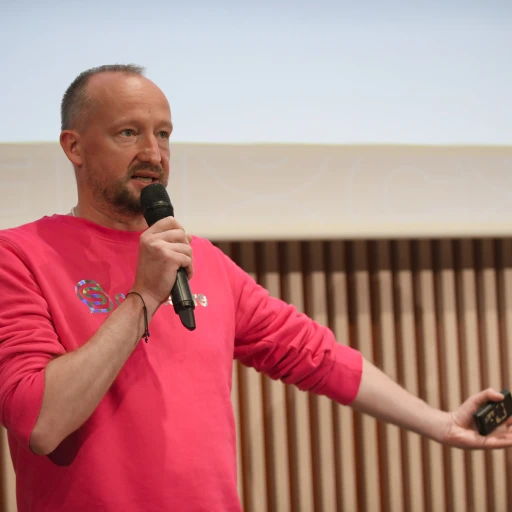
Understanding Headless CMS
Decoding the Headless CMS Concept
In the evolving landscape of content management, the headless CMS has emerged as a game-changer. Unlike traditional CMS platforms, which tightly couple the backend and frontend, a headless CMS provides a decoupled architecture. This separation allows developers to manage content independently from its presentation layer, offering greater flexibility and control.
At the core of a headless CMS is its API-driven approach. This means that content is delivered via APIs, enabling seamless integration with various frontend technologies. This architecture is particularly beneficial for applications that require real-time updates or need to support multiple platforms, such as web, mobile, and even IoT devices.
Benefits of a Headless Approach
One of the main advantages of using a headless CMS is the ability to build highly customized frontend solutions. Developers can choose any frontend framework or library that best suits their needs, whether it be React, Vue.js, or Angular. This flexibility not only enhances the performance of the applications but also supports the creation of unique user experiences.
Furthermore, headless CMS platforms often offer better scalability and performance. By separating content management from content delivery, these systems can efficiently handle large volumes of data and traffic, which is crucial for high-demand applications like headless commerce.
Why Developers Prefer Headless CMS
For developers, the headless architecture simplifies the development process by allowing them to focus on building the frontend without worrying about the complexities of the backend. This separation also means that content editors can manage content without interfering with the development workflow, leading to more efficient content management and quicker updates.
As the demand for dynamic and interactive web applications grows, the role of headless CMS in modern software solutions becomes increasingly important. In the following sections, we will explore how the frontend plays a crucial role in this architecture and the challenges developers face in creating effective frontend solutions for headless CMS.
The Role of Frontend in Headless CMS
The Importance of Frontend in a Headless CMS
In the realm of headless CMS, the frontend plays a crucial role in shaping how users interact with content. Unlike traditional CMS platforms where the backend and frontend are tightly coupled, a headless CMS decouples these layers, allowing for greater flexibility in understanding the role of headless CMS in modern software solutions. This separation empowers developers to create dynamic and engaging user experiences tailored to specific needs.
Frontend development in a headless architecture focuses on the presentation layer, where developers can leverage modern frameworks to build responsive and performant applications. This approach supports various devices and platforms, ensuring seamless content delivery across multiple channels.
Enhancing User Experience and Performance
One of the primary benefits of a headless CMS is the ability to optimize the user experience. By using APIs to fetch content, developers can ensure real-time updates and high performance, crucial for applications such as headless commerce and static sites. This flexibility allows for the integration of advanced features and personalization, enhancing the overall user journey.
The decoupled nature of headless CMS platforms also means that frontend developers can choose from a variety of frameworks to best suit their project needs. Whether opting for server-side rendering or client-side applications, the focus remains on delivering a seamless and engaging experience for the end user.
Challenges and Opportunities
While the benefits are clear, frontend development for headless CMSes does come with its own set of challenges. Developers must navigate the complexities of managing content and data across different environments. The need for robust API management and efficient data handling is paramount to ensure smooth operation and high performance.
Despite these challenges, the opportunities for innovation in frontend development are vast. As headless CMS solutions continue to evolve, developers are equipped with the tools and support needed to create cutting-edge applications that push the boundaries of what's possible in content management and delivery.
Popular Frontend Technologies for Headless CMS
Exploring Frontend Technologies for Headless CMS
In the realm of headless CMS development, selecting the right frontend technology is crucial for creating efficient and dynamic user experiences. As developers navigate the complexities of a decoupled CMS architecture, they often turn to a variety of frontend frameworks and libraries that can effectively communicate with the backend via APIs.
Here are some popular frontend technologies that have gained traction in the headless CMS landscape:
- React: Known for its component-based architecture, React is a favorite among developers for building interactive and high-performance user interfaces. Its ability to efficiently manage data and render changes in real time makes it a strong contender for headless CMS applications.
- Vue.js: With its simple integration capabilities and flexible nature, Vue.js is ideal for developers looking to enhance the presentation layer of their headless CMS. It offers a gentle learning curve while providing robust support for complex applications.
- Angular: As a comprehensive framework, Angular offers powerful tools for building dynamic single-page applications. Its built-in features for data management and dependency injection make it a solid choice for larger projects that require extensive frontend capabilities.
- Next.js: This React-based framework is optimized for server-side rendering and static site generation, making it perfect for headless CMS platforms that prioritize performance and SEO.
These technologies not only enhance the capabilities of the frontend but also align with the evolving needs of headless CMS platforms. They provide the flexibility to manage content efficiently while ensuring a seamless user experience. For more insights on the future of software, exploring the ethical considerations in development can offer a broader perspective on how these technologies are shaping modern software solutions.
Challenges in Frontend Development for Headless CMS
Overcoming Frontend Development Hurdles
When it comes to developing the frontend for a headless CMS, developers often face a unique set of challenges. Unlike traditional CMS platforms, where the frontend and backend are tightly coupled, a headless architecture separates these layers. This decoupling offers flexibility but also introduces complexities that need careful management.
One of the primary challenges is the integration of various APIs. Since the content is delivered through APIs, developers must ensure that these APIs are well-integrated into the frontend framework. This requires a deep understanding of API management and the ability to handle real-time data efficiently.
Another challenge lies in performance optimization. With a headless CMS, the frontend is responsible for rendering the content. This can impact performance, especially if the data is extensive or if the applications are built for headless commerce. Developers must focus on optimizing the presentation layer to ensure smooth user experiences.
Moreover, the choice of frontend technologies can also pose a challenge. The plethora of available options can be overwhelming. Developers need to select frameworks that not only support the specific features of headless CMSes but also align with the team's expertise and the project's requirements.
Lastly, there is the challenge of maintaining a seamless content delivery experience. As content management becomes more dynamic, ensuring that the frontend can handle both static site generation and server-side rendering becomes crucial. This requires a strategic approach to development, where the frontend is robust enough to adapt to evolving content needs.
Best Practices for Frontend Development in Headless CMS
Emphasizing Performance and Optimization
When it comes to building effective frontend solutions for headless CMS, performance is paramount. Developers should focus on optimizing the presentation layer to ensure swift content delivery. This involves leveraging server-side rendering and static site generation to enhance load times and user experience. By utilizing these techniques, frontend developers can significantly improve the performance of applications, especially in headless commerce scenarios where speed is crucial.
Choosing the Right Frontend Framework
The choice of frontend framework can greatly impact the development process. While traditional CMS platforms often dictate specific frameworks, headless CMSes offer flexibility. Developers should select frameworks that align with the project's requirements and the team's expertise. Frameworks like React, Vue, and Angular are popular choices due to their robust features and community support. These frameworks facilitate seamless integration with APIs, making them ideal for headless architecture.
Implementing Scalable and Maintainable Code
Scalability and maintainability are crucial in frontend development for headless CMS. Developers should adopt modular architecture to manage content efficiently and ensure the codebase can evolve with changing requirements. This involves organizing components and services in a way that supports easy updates and expansions. Additionally, adhering to coding standards and best practices helps maintain clean and understandable code, which is essential for long-term project success.
Prioritizing Real-Time Data Management
In the dynamic landscape of headless CMS, real-time data management is becoming increasingly important. Developers should implement solutions that allow for real-time content updates and synchronization across various platforms. This is particularly relevant for applications that require instant data reflection, such as those in headless commerce. Utilizing APIs that support real-time data exchange can enhance the user experience and ensure content is always up-to-date.
Ensuring Robust API Integration
API integration is at the heart of headless CMS architecture. Developers must ensure that APIs are well-documented and capable of handling the demands of the application. This includes supporting a variety of data formats and ensuring seamless communication between the frontend and backend. Robust API integration is essential for efficient content management and delivery, enabling developers to build applications that are both powerful and flexible.
Future Trends in Frontend for Headless CMS
Emerging Trends in Frontend Development
The landscape of frontend development for headless CMS platforms is rapidly evolving, driven by the need for more dynamic and efficient content delivery systems. As businesses shift towards headless architecture, several trends are emerging that developers should keep an eye on.
Real-Time Content Delivery
One of the most significant trends is the push towards real-time content delivery. With the increasing demand for immediate updates and interactive user experiences, developers are focusing on optimizing the presentation layer to support real-time data updates. This is particularly important for applications in headless commerce where timely information can impact sales and customer satisfaction.
Static Site Generation and Server-Side Rendering
Static site generation (SSG) and server-side rendering (SSR) are becoming more prevalent as they offer improved performance and SEO benefits. These techniques allow for faster page loads and better user experiences by pre-rendering content. As headless CMS platforms evolve, integrating SSG and SSR into the frontend framework will be crucial for developers aiming to enhance performance and manage content efficiently.
API-Driven Development
APIs continue to play a pivotal role in the decoupled CMS architecture. Developers are leveraging APIs to create more flexible and scalable frontend solutions. This API-driven approach allows for seamless integration with various CMS platforms and other third-party services, enhancing the capabilities of the frontend headless solutions.
Focus on Performance Optimization
Performance remains a top priority as users expect fast and responsive applications. Developers are increasingly utilizing performance optimization techniques, such as code splitting and lazy loading, to ensure that applications built on headless CMS platforms offer smooth user experiences. These techniques help in reducing the initial load time and improving the overall performance of the frontend.
Increased Adoption of Open Source Frameworks
Open source frameworks are gaining traction as they provide developers with the flexibility and community support needed to build robust frontend solutions. These frameworks offer a range of features that can be tailored to the specific needs of a project, making them an attractive option for developers working with headless CMS platforms.
As the future of software continues to unfold, staying updated with these trends will be essential for developers looking to create effective frontend solutions for headless CMS applications. By embracing these advancements, developers can ensure that their projects are not only efficient but also prepared for the evolving demands of content management and delivery.















